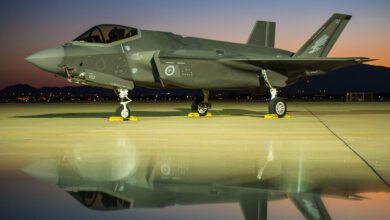The US Marine Corps (USMC) plans to deploy a trio of new air defense systems by 2025 to bolster its defenses against rockets, drones, and cruise missiles.
The move comes as the service shifts its focus to protecting its soldiers and installations from sophisticated aerial threats after years of prioritizing coastal operations.
According to USMC Ground Based Air Defense program manager Col. Andrew Konicki, the three air defense systems are the Medium-Range Intercept Capability (MRIC), Marine Air Defense Integrated System (MADIS), and Light MADIS.
The MRIC will be used to defend against larger drones and other advanced threats, while the mobile MADIS and LMADIS will be deployed in pairs to strengthen Indo-Pacific defense.
“That’s not anything that we’re doing from a program office standpoint, that’s essentially derived from the [current] threat,” Konicki said, as quoted by Breaking Defense. “The threat is ever changing and ever evolving. It’s challenging to keep up with that.”
The systems will undergo a series of operational trials this year before being handed over to the Marines.
Based on Israel’s Iron Dome
Based on the Iron Dome, the MRIC utilizes a truck-mounted launcher and powerful Tamir interceptors similar to those used by the Israeli air defense system.
It also incorporates the Common Aviation Command-and-Control System, a mini battle management control system, and Northrop’s AN/TPS-80 air surveillance radar.
In July 2022, the MRIC successfully hit simulated enemy cruise missiles during a trial at the White Sands Missile Range in New Mexico.
Konicki said the service will conduct a quick reaction assessment with the system later this year and begin training Marines on how to use the MRIC ahead of its planned fielding in 2025.
Layered Air Defense
In addition to the MRIC, the air defense system trio will consist of the MADIS and LMADIS, which are both mounted on armored vehicles.
The MADIS uses two Joint Light Tactical Vehicles: the first for housing a 360-degree radar, command and control suite, and electronic warfare system, while the second is for the interceptors.
Its light version also utilizes two Ultra-Light Tactical Vehicles for target detection, tracking, and non-kinetic interception.
When deployed, the two systems are expected to provide effective, layered air defense to forces on the ground.












